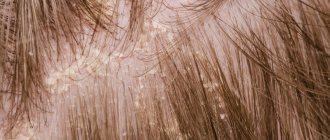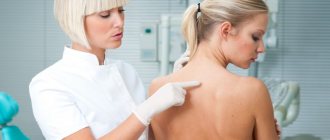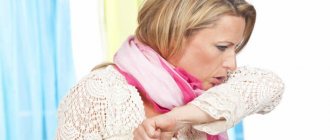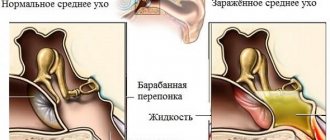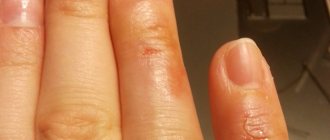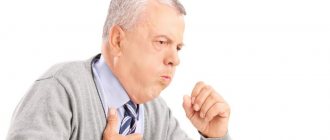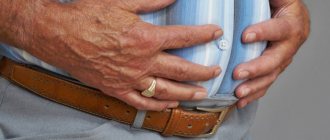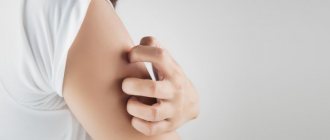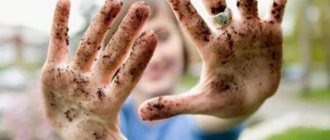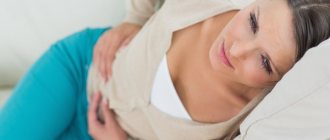Introduction
Different areas of the skin can be affected by specific fungal microorganisms that provoke skin fungus or mycosis.
If you suspect this unpleasant disease, you should consult a dermatologist . There are also a number of folk remedies against mycosis that can be easily and effectively used at home.
What could be the consequences?
If the disease is not treated, then an advanced form of nail fungus can cause serious consequences, which can significantly worsen the general condition of the body and toenails. The main consequences of onychomycosis include the following conditions:
- Subungual hyperkeratosis is a complication of onychomycosis, in which the nail plate thickens significantly.
- Nail onycholysis is the separation of the nail from the nail bed, when a void forms under the hard layer.
- Destruction of the nail plate. In this case, it may be necessary to remove the nail surgically.
- Epidermophytids are allergic consequences of toenail fungus, which periodically manifest as rashes throughout the body.
- There is a possibility of infection spreading throughout the body. Mycosis can affect large areas of the skin of the legs, arms, face, as well as hair follicles and, in rare cases, the nervous and lymphatic systems.
Causes and symptoms of cutaneous mycosis
The penetration of infection into the body is facilitated by two types of factors: internal or external. Internal causes of the development of skin fungus are:
- weakened immunity after illness or vitamin deficiency;
- diabetes;
- long-term use of hormonal drugs;
- use of antibiotics without a doctor’s prescription;
- allergic reactions to the use of antibacterial cosmetics;
- HIV or AIDS.
External factors of infection include the penetration of microorganisms through cracks or injuries on the skin when visiting public places (saunas, baths, swimming pools and even guests).
There is a high probability of developing mycosis in those people who allow other people to use personal hygiene items (razor, shoes, towel, etc.).
Microorganisms often pass through areas of the skin through sweat during hot weather and exercise. The risk of infection is quite high with high humidity and the formation of diaper rash on skin folds.
When infected, the fungus begins to develop and manifest itself with the following symptoms:
- itching appears and, as a result, discomfort;
- the skin in which the infection is localized acquires a pinkish tint;
- cracks, peeling, diaper rash and rashes appear;
- the affected area emits a specific odor;
- against the background of decreased immunity, frequent colds and ailments occur.
Important!
If you notice the above symptoms, you should not delay treatment of the fungus, since in its advanced form the disease can spread to internal organs. It will be much more difficult to cure the advanced stage of mycosis.
Main groups of antimycotic drugs
The fungus adapts very quickly and develops resistance to various medications. Self-treatment may lead to the development of a more resistant form of fungal infection due to mutation of the virus.
In pharmacology, there are three types of drugs aimed at combating mycosis :
- Polyene antibiotics are fungicidal drugs with a broad spectrum of action that increase the permeability of the plasma membrane of fungal cells, and as a result, their rapid death. Polyenes are very effective in treating various forms of fungal infection, but some strains are not affected by this drug.
- Azoles are drugs of synthetic origin with an antimycotic effect for local and systemic treatment of fungal infections. They have a wide spectrum of antifungal action; even some strains of coca are sensitive to drugs in this group.
- Allylamines are synthetic drugs that effectively cope with higher, dimorphic and mold fungi. The drug is prescribed for some forms of lichen and dermatomycosis.
The most effective herbal recipes
Mint
It is necessary to pick a small bush of the plant, wash it and dry it, and then finely chop it together with the leaves to a liquid pulp, adding a pinch of salt.
The composition must be applied to the affected areas of the skin for 60 minutes once a day until complete healing.
Lilac
Pick about 10 g of lilac flowers and pour 0.5 glass of alcohol into them. Place the container in a cool, dark place for 2 weeks. Apply the resulting tincture to the affected areas as often as you like until the condition of the skin noticeably improves.
cocklebur
You need to take a small amount of the leaves of this plant, grind it finely and squeeze out the juice. Treat the infected layer of the epidermis with this liquid daily.
Important!
Attention! It is advisable to make a new portion of cocklebur juice from fresh leaves every 3 days.
Kalanchoe
A small clean leaf of the plant is applied as a compress to the affected area of skin 3 times a day. As a rule, for a complete cure, this procedure is performed over 2-3 months.
Celandine
Squeeze 2 drops of celandine juice and mix it with the same amount of calendula tincture and oregano juice.
Add 4 tbsp to the container with the ingredients. clean boiled water. The resulting mixture should be rubbed into the affected skin areas several times a day.
Celandine can be prepared in another way: it can be infused in alcohol for 14 days in a 1:2 ratio. Use the tincture daily. It is enough to do the procedure once a day.
Other ways to treat mycosis at home
Salicylic acid
A 10% salicylic acid-based ointment is considered an effective treatment. The product is applied to a cotton pad and applied to infected areas of the skin 1-2 times a day. The effect is usually achieved within 5–6 days.
Reference! Acute forms of mycosis should be treated with salicylic ointment with a higher acid concentration. Use within one week. If there is no effect, the product is changed to another.
Tar soap
A wonderful remedy against skin fungus is tar soap, which can be purchased at any pharmacy. The following have a good antifungal effect:
- Tana soap , which contains birch tar and triclosan.
- Black soap from Grandma Agafya . It also contains birch chaga.
- Soap "Nevskaya cosmetics" with a complex composition.
This soap should be used every time you take a shower and bath, especially carefully lubricating the affected areas of the epidermis. After the body is wiped with a towel, the affected areas are additionally lubricated with iodine.
Strong black coffee
A strong coffee drink has a strong antihistamine and analgesic effect.
For a single procedure, it is enough to brew 5 tablespoons in one liter of boiling water. ground coffee.
The infused mixture can be used as compresses, rubdowns, or rubbing in grounds.
It is better to carry out manipulations in the evening, when the body is most relaxed. It is enough to devote 20–30 minutes to the procedure daily until visible symptoms disappear.
Onion and lemon
A freshly squeezed mixture of onion and lemon has a powerful effect on the fungus. The components must be in equal proportions to each other. Moisten a cotton pad with the juice and lubricate the irritated area several times a day.
Baking soda
A tablespoon of soda must be mixed with a small amount of warm boiled water. Shake the mixture until a homogeneous consistency is formed. Apply to the affected area and leave for 15–20 minutes. As a rule, daily procedures must be performed for one month to achieve maximum effect.
Garlic cream
Mix chopped garlic and butter in equal proportions until smooth. The composition must be applied to the infected areas every day for one month, maintaining a 20-minute interval.
Ointment of hops, burdock and calendula
You need to take 2 tbsp. collecting hop cones, burdock roots and 1 tbsp. calendula inflorescences.
All ingredients must be filled with water and brought to a boil. From the resulting broth, take a mixture of 1 tbsp. and combine it with 50 g of Vaseline.
The result should be a viscous mixture that is easy to apply to the body.
The layer of the applied product should be quite thin; this can be achieved by light rubbing. The procedure can be performed several times a day.
Chatterbox
Mix by shaking in a small sealed container (15 ml). salicylic alcohol, 15 ml. boric acid and ½ tsp. sulfur ointment. Use daily before bed. Stored in a cool, dark place.
Morning dew
In the summer, it is very useful to treat skin fungus (especially on the feet) to walk barefoot in the morning dew . This procedure serves as an excellent means of hardening, and therefore increasing immunity. The body becomes stronger and mycosis recedes. It is advisable to keep walking barefoot on the ground and grass for at least 20 minutes, or more.
Reference! This method of treatment can be combined well with other types of procedures. Walking barefoot also has a preventive effect on the entire body system.
Hydrogen peroxide
Hydrogen peroxide is an excellent antiseptic and has proven itself in the treatment of various types of dermatophytes. Use a 3% solution of hydrogen peroxide, as high concentrations can adversely affect the nails and skin of the feet.
To prepare a compress, you will need a bath of hot soapy water, a 3% hydrogen peroxide solution, cotton pads, and polyethylene. Feet should be steamed in hot water for 10-15 minutes, and then cotton pads soaked in hydrogen peroxide should be applied to the damaged nails. You can cover the compress with polyethylene on top and insulate it.
The compress is left for 40-50 minutes, after which an antifungal cream is applied to the surface of the toenails. The course of treatment is 15-20 days.
General contraindications
There is no doubt that natural preparations for the treatment of mycosis of the skin have a fairly strong healing effect. However, there are certain contraindications for their use:
- You cannot use one or another natural component if you are intolerant to it;
- in case of severe microcracks, due to the advanced stage of the disease, treatment medications with caustic components (for example, vinegar, onion, lemon, salicylic acid) should not be used;
- If you use this or that product and allergic reactions or other side effects occur to it, you must stop treatment and seek advice from a specialist.
If after 14 days of treatment with folk remedies the problem is not resolved, or the mycosis begins, on the contrary, to progress even more, then the chosen method of treatment should be suspended.
It is necessary to consult a dermatologist with the problem and follow his recommendations.
It is quite possible that the disease has already reached an advanced stage, and it is necessary to intervene in the recovery process and use already proven medications to improve the condition of the skin.
What is nail fungus
Nail fungus or onychomycosis is one of the most common fungal diseases. You can become infected with it in a sauna, swimming pool, on the beach, or at home. Example - if someone in your family had onychomycosis, was treated and recovered, parasite spores can still live for a long time in the bathroom, on the tiles in the kitchen and hallway, on carpets and in house slippers. People with soft nail plates are most susceptible to the disease, but strong nails alone do not provide insurance against infection with dermatrophytes.
Factors provoking the development of onychomycosis:
- poor quality, too tight shoes (especially made from non-natural materials);
- trauma, plate deformation;
- nail extensions;
- lack of personal hygiene;
- the use of certain household chemicals.
The risk of developing onychomycosis increases with age, since metabolic processes slow down over time, and the nail tissue recovers much worse. Children usually become infected from adults.
Prevention
Preventive measures against skin fungal infection are divided into primary and secondary . Primary prevention involves following personal hygiene rules aimed at reducing the risk of fungal infection:
- do not use other people’s household items (comb, razor, towel) and do not wear other people’s things, especially this rule applies to shoes;
- rational treatment with antibiotics, not exceeding permissible standards when using them;
- after washing, things should be ironed well, especially socks;
- do not walk barefoot in public places.
Secondary prevention is aimed at avoiding recurrent mycosis :
- regularly carry out wet cleaning in the apartment;
- avoid sweating and diaper rash by regularly ventilating the room and taking a shower;
- disinfect shoes, towels, bathrobes, pajamas and other things from time to time;
- undergo diagnostics at least once every six months.
